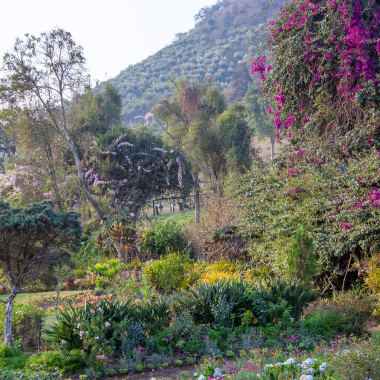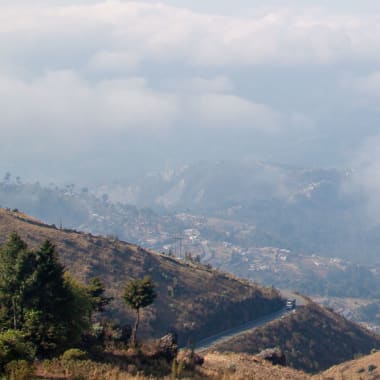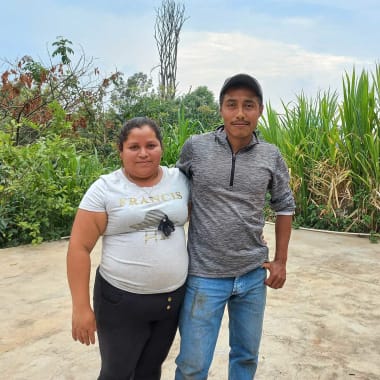
Guatemala Santa Isabel Las Flores
Sold out
Flavours of stone fruit, toffee and baked peach
Body Acidity
Washed Caturra
Roasted omni for filter and espresso
Guatemala Santa Isabel Las Flores online
Capital: Guatemala City
Population: 15.2 million
Area: 109 thousand square km
Guatemala’s production of coffee first grew in the 1860s on the back of a declining indigo trade, which had previously existed as it’s main export. Up until 2011 Guatemala was in the top 5 highest producing coffees nations in the world, before being overtaken by Honduras.
The majority of coffee farmers in Guatemala are small holders and a large percentage of them, along with the general population of Guatemala, associate with the 20 officially recognised indigenous communities of Guatemala. Guatemala’s national coffee institute, Anacafé, has been an important figure in helping Guatemala combat the outbreak of leaf rust in the country. Since 2012, the outbreak of this disease has reduced crop out-put by up to 25% and has forced farmers to move away from traditional varieties such as bourbon and caturra and instead move towards newer, more disease resistant varietals.
Grown amongst the Fuego the Acatenango volcanoes, the Acatenango valley is a high altitude growing region with rich volcanic soil
Antigua is a region defined by rich volcanic soil, low rainfall and lots of sunshine. It is situated in the shadow of Fuego, one of Guatemala’s three active volcanoes
A non-volcanic region of Guatemala characterised by high altitude and predictable climate. Often considered to produce the highest quality coffee in Guatemala

Sold out
Flavours of stone fruit, toffee and baked peach
Body Acidity
Washed Caturra
Roasted omni for filter and espresso
Guatemala Santa Isabel Las Flores online
Sold out
Flavours of violet, toffee and baked peach
Body Acidity
Washed Caturra
Roasted omni for filter and espresso
Guatemala Santa Isabel Las Flores online
Sold out
Flavours of vanilla, plum, red currant
Body Acidity
Washed Yellow Bourbon
March 2025 harvest
Roasted omni for filter and espresso
Guatemala Hacienda Carmona onlineSold out
Flavours of florals, raspberry, cherry, chocolate finish
Body Acidity
Washed Bourbon, Caturra
February 2015 harvest
Roasted omni for filter and espresso
Guatemala Los Encuentros online
Sold out
Flavours of cooked fruit, raisin, and toffee
Body Acidity
Washed Caturra, Bourbon
April 2021 harvest
Roasted omni for filter and espresso
Guatemala Finca Noelia Pablo Bamaca online
Sold out
Flavours of rosehip, toffee, red apple
Body Acidity
Washed Caturra
March 2019 harvest
Roasted omni for filter and espresso
Guatemala Jorge Velasquez Finca El Plan onlineSold out
Flavours of delicate acidity, light stone fruit, toffee finish
Body Acidity
Washed Catuai, Caturra, Pache
January 2015 harvest
Roasted omni for filter and espresso
Guatemala La Idolia online
Sold out
Flavours of hazelnut, shortbread and fig
Body Acidity
Washed Caturra
Roasted omni for filter and espresso
Guatemala Finca Los Cipreses online
Sold out
Flavours of frangipani, orange, blackberry
Body Acidity
Washed Bourbon
Roasted omni for filter and espresso
Guatemala Ricardo Zelaya online
Sold out
Flavours of Lychee, milk chocolate, hazelnut
Body Acidity
Washed Bourbon, caturra
March 2021 harvest
Roasted omni for filter and espresso
Guatemala Finca El Güitano Marcotulio Estaban Solis onlineSold out
Flavours of currants, fig, red apple
Body Acidity
Washed Bourbon, Caturra
February 2016 harvest
Roasted omni for filter and espresso
Guatemala Rincon onlineSold out
Flavours of sweet cherry, apple, toffee
Body Acidity
Washed Caturra
Roasted omni for filter and espresso
Guatemala Maravilla online
Sold out
Flavours of melon, toffee, strawberry
Body Acidity
Washed Caturra
February 2021 harvest
Roasted omni for filter and espresso
Guatemala Finca El Mirador Vidal Perez Ambrocio online
Sold out
Flavours of dulce de leche, raisin, brown sugar
Body Acidity
Washed Bourbon
Roasted omni for filter and espresso
Guatemala Hacienda Carmona online
Sold out
Flavours of Valencia orange, yellow peach, boysenberry
Body Acidity
Washed Pacamara
Roasted omni for filter and espresso
Guatemala La Bugambilia online
Sold out
Flavours of panela sugar, black tea and blackcurrant
Body Acidity
Washed Caturra
Roasted omni for filter and espresso
Guatemala Santa Isabel Dulce online
Sold out
Flavours of liqourice, brown sugar, pear
Body Acidity
Washed Caturra
April 2019 harvest
Roasted omni for filter and espresso
Guatemala Eugenio Ahilon online
Sold out
Flavours of crisp green apple, malt, lime
Body Acidity
Washed Caturra, Bourbon, Catuaí, San Ramón
Roasted omni for filter and espresso
Guatemala Francisco Martínez Finca El Regalo online
Sold out
Flavours of red cherry, cola, brown sugar
Body Acidity
Washed Bourbon, Caturra, Pacamara
February 2020 harvest
Roasted omni for filter and espresso
Guatemala Finca La Bendición Amilcar Perez onlineSold out
Flavours of toffee, cherry, creamy
Body Acidity
Washed Bourbon, Caturra
March 2016 harvest
Roasted omni for filter and espresso
Guatemala Peña Blanca onlineSold out
Flavours of peach, brown sugar, lime
Body Acidity
Washed Catuai, Bourbon
March 2018 harvest
Roasted omni for filter and espresso
Guatemala Guillermo Sanchez San Jose Ocaña Estate online
Sold out
Flavours of green apple, pear, grape
Body Acidity
Washed Bourbon, Catimor, Caturra, Maragogype, Pache
March 2024 harvest
Roasted omni for filter and espresso
Guatemala Santiago Morales online
Sold out
Flavours of raspberry jelly, guava, violet
Body Acidity
Washed + anaerobic Gesha
April 2025 harvest
Roasted omni for filter and espresso
Guatemala Rio Dorado online
Sold out
Flavours of plum, lime, raspberry jam
Body Acidity
Washed Bourbon
May 2025 harvest
Roasted omni for filter and espresso
Guatemala Nicolás Ramírez online